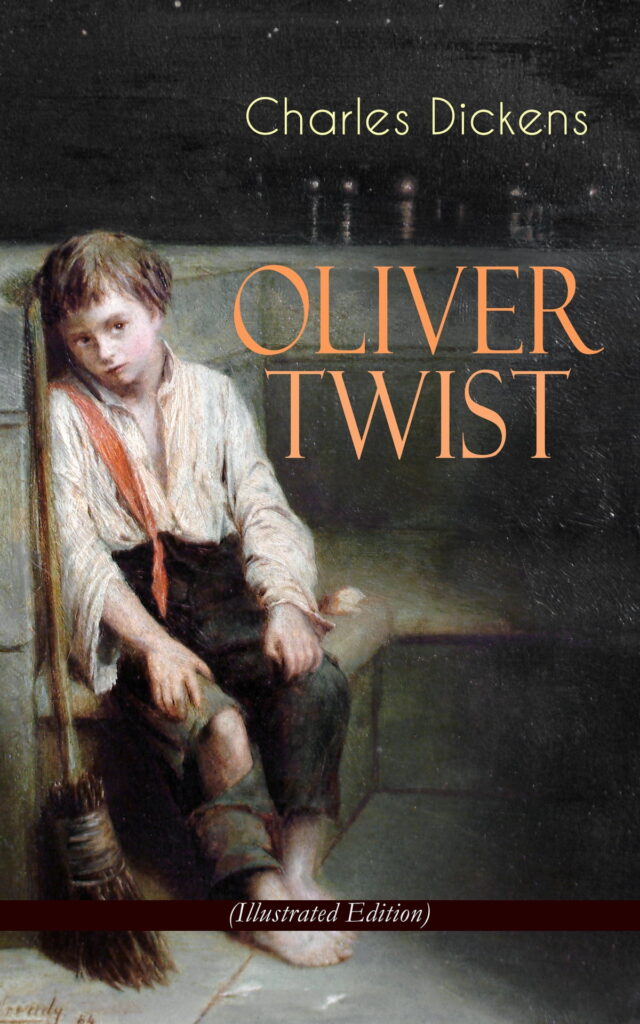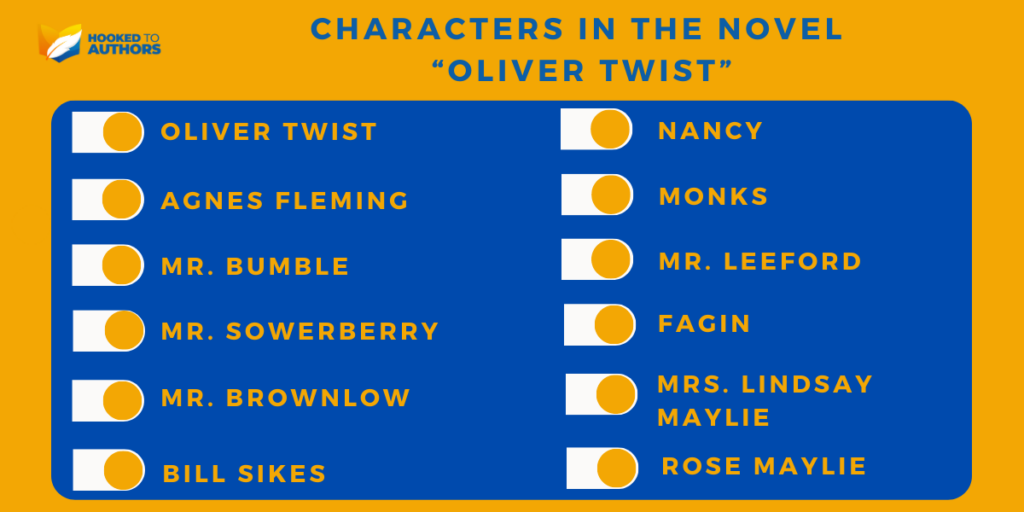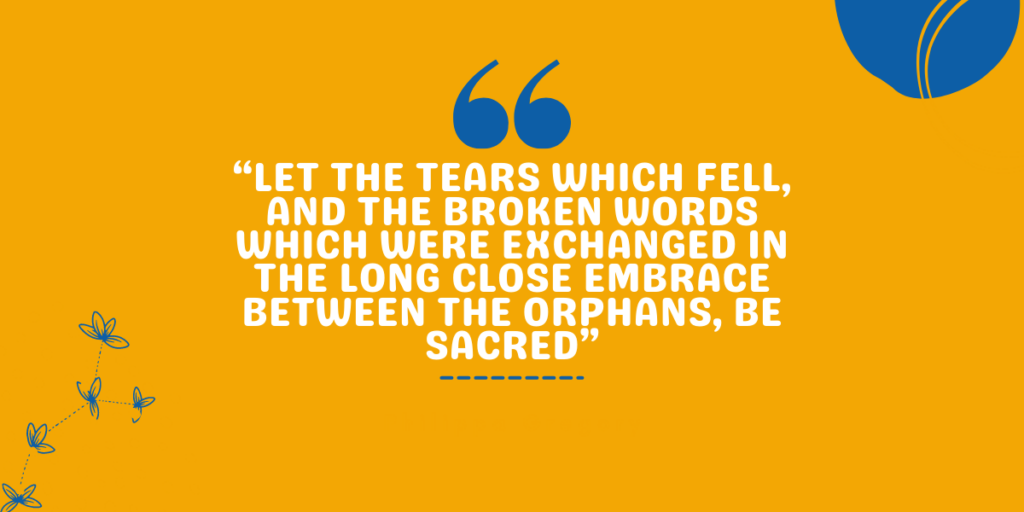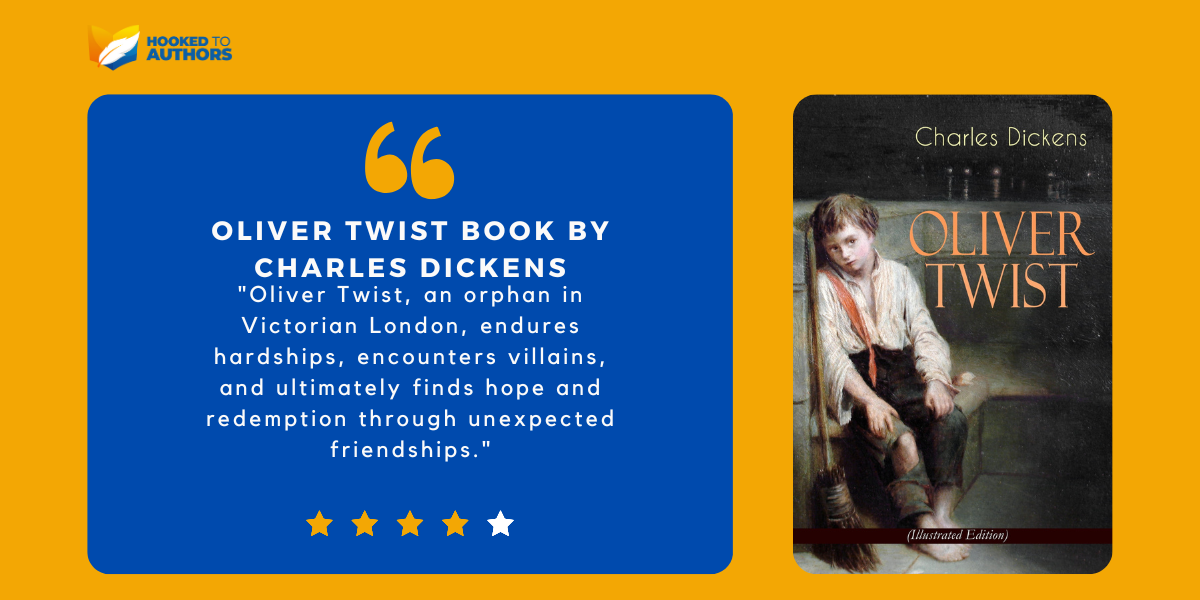When it comes to the discussion of the most celebrated works of Charles Dickens, the name Oliver Twist is bound to pop up. Having been the subject of several adaptations and literature references, it continues to be one of the most well-written and beloved novels of the prolific author.
Also known as The Parish Boy’s Progress, Oliver Twist was the second novel by the brilliant mind of Dickens. It was published serially between the years 1837 to 1839 and released as a book in 1838.
The other title of the novel was a connection to The Pilgrim’s Progress, written by John Bunyan. It also served as a reference to the caricature series, A Rake’s Progress, and A Harlot’s Progress, developed in the 18th century by William Hogarth, a famous English painter.
Oliver Twist is one of the earliest examples of Dickens using his novels to provide a social commentary on the Victorian era. Through this story, he explores subjects such as domestic violence and child labor.
In fact, it’s said that bits of the novel was inspired by the story of Robert Blincoe, whose accounts of being employed as a child laborer were extremely popular during the 1830s.
If you wish to learn further about the novel, keep reading to explore the many facets that make this story relevant to this day.
| Title | Oliver Twist |
|---|---|
| Author | Charles Dickens |
| Publication Date | 1837-1839 |
| Genre | Social criticism, Bildungsroman |
| Setting | Primarily in London, England during the early 19th century |
| Protagonist | Oliver Twist |
| Antagonist | Fagin and Bill Sikes |
| Major Themes | Poverty, crime, social injustice, identity |
| Plot Summary | Oliver Twist is an orphan who grows up in a workhouse and is sold into apprenticeship with an undertaker. He runs away and is taken in by a gang of young pickpockets led by the criminal Fagin. Oliver is eventually rescued by a kind family, but Fagin and his associates, including the brutal Bill Sikes, are determined to capture him and bring him back to a life of crime. The novel follows Oliver's struggle to escape the criminal underworld and discover his true identity. |
| Major Characters | Oliver Twist, Fagin, Bill Sikes, Nancy, Mr. Brownlow |
| Literary Significance | Oliver Twist" is one of Dickens' most famous works and is notable for its vivid depictions of poverty and crime in Victorian England. The novel's portrayal of the harsh realities of life for the poor and its criticism of the workhouse system and child labor practices had a significant impact on social reform efforts of the time. The character of Fagin, with his stereotypical portrayal of a Jewish criminal, has been the subject of controversy and criticism over the years. Nonetheless, "Oliver Twist" remains a classic of English literature. |
Table of Contents
Summary of Oliver Twist

The story begins by introducing the readers to Oliver Twist, the protagonist who was born in a workhouse in England, during the 1830s. We get to know that Oliver’s mother died shortly after giving birth to him and he was found on the street. Thereby making him an orphan from a tender age.
Oliver spends a major chunk of his childhood at a child farm, which is a poorly run orphanage, before being moved to a workhouse where all the other boys bully him badly.
One day, the bullying leads to him asking for a second helping of his portion of the gruel, which is unacceptable to Mr. Bumble, who is the manager of the workhouse. Bumble is willing to pay a small amount to anyone willing to take Oliver away from the workhouse.
After escaping the fate of having to work for a chimney sweep, Oliver ends up with an apprenticeship with Mr. Sowerberry, a local undertaker. One day, Oliver hears derogatory comments about his mother from Noah Claypole, which causes him to attack Noah.
Aware of Sowerberry’s anger, Oliver flees from the place and makes his way towards London. While he is roaming around feeling exhausted and hungry, Oliver comes across a boy named Jack Dawkins.
Jack provides a roof over Oliver’s head at the house of Fagin, who is Jack’s benefactor. However, it is revealed that Fagin is actually a criminal who trains orphan boys to become pickpockets.
Oliver is sent on his first pickpocketing mission along with two other boys after receiving training for a couple of days. Once he witnesses the boys stealing a handkerchief from an older man, Oliver feels scared and runs away. Although he gets caught, he manages to escape being taken to prison for the act.
He is taken in by Mr. Brownlow, the man whose handkerchief was stolen by the other boys in Oliver’s group. Brownlow looks after Oliver as he recovers from his feverish state and notices the uncanny resemblance between Oliver’s face and that of the young woman whose portrait hangs in his home.
Although Oliver receives a lot of warmth and nourishment under Brownlow’s care, he is captured by a man named Bill Sikes and his girlfriend, Nancy. They are members of Fagin’s gang and bring Oliver to Fagin after capturing him.
Fagin orders Oliver to join Sikes for a burglary they are planning. While Oliver gets shot by a servant at the home they intended to rob, Sikes escapes. Oliver is then accepted into the home by a woman named Mrs. Maylie and Rose, who is her adopted niece.
Oliver spends a beautiful summer with the two ladies, but his happiness is short-lived, as Fagin and someone named Monks are determined to capture him. Meanwhile, it is revealed to the readers that a gold locket was left behind by Oliver’s mother, which is eventually obtained and destroyed by Monks.
Rose and her aunt arrive in London, which is when Nancy meets Rose and discloses Fagin’s plans, but this conversation gets overhead by someone belonging to Fagin’s group. When Sikes learns about Nancy’s betrayal, he kills her and escapes from London.
Feelings of guilt follow Sikes and he is also pursued by an angry mob. As a result of this, Sikes accidentally hangs himself, which seems like he has committed suicide. Oliver ends up reuniting with Brownlow, owing to the efforts of the Maylies. He then confronts Monks about the truth of his heritage.
Monks reveal to him that he is actually Oliver’s half-brother. Mr. Leeford, their father, was unhappy in his marriage and had an affair with Agnes Fleming, who was Oliver’s mother. Monks had been pursuing Oliver so as to prevent him from getting a share of their family’s wealth.
Monks are then made to hand over Oliver’s share of the wealth, thanks to the pressure from Brownlow. Another revelation states that Rose is actually Oliver’s aunt and his mother’s younger sister.
Brownlow adopts Oliver, Fagin is punished for his evil deeds, and the novel ends with all of them happily retiring to a place in the countryside.
Book Review of Oliver Twist
Charles Dickens was a keen observer of society and never shied away from expressing his feelings towards social oppression, which forms the foundation of Oliver Twist.
The novel is delightful due to several factors, including interesting characters, engaging interactions, colliding plotlines, and shocking revelations that are a part of Dickens’ signature style.
The twists and turns keep the readers at the edge of their seats, wondering what’s coming next. Social inequality and class distinctions were some of the elements of 19th-century London that Dickens explored very intricately and sensitively through this story, a trend which he continued in his later works as well.
The author shows the connection between crime and poverty, reiterating that a person’s financial state leads them to commit malicious crimes. He also reminds the readers that while some crimes are committed to fill one’s tummy, others are committed purely for evil purposes.
Dickens used the distinctions between the upper class and the working class to display how the crimes that are committed due to poverty cause a dehumanization of society.
While on the one hand, he paints a picture of the gruesome reality of Victorian society, on the other hand, he symbolizes hope and the power of benevolence through the characters of Brownlow, Rose, and Mrs. Maylie.
The plight of orphans and the roots of a character being traced back to a difficult childhood are displayed through Oliver, very much reminiscent of Dickens’ own hardships as a child and the hurdles he had to endure due to financial impediments.
Fate plays an essential role in the journey of the characters created by the author, which is evident through Oliver’s experiences while he goes from being a penniless orphan to a boy with familial connections that fetch him a small fortune towards the end of the story.
Characters in Oliver Twist

Being able to create characters that remain imprinted in one’s mind for generations truly is an art, and Dickens was an expert in this department. Oliver Twist is brimming with numerous characters, and some of them are as follows:
1. Oliver Twist
The protagonist of the novel. He goes through a wonderful journey in the novel, filled with several hardships. Ultimately, though, he finds people who love him, leading to a happy life.
2. Agnes Fleming
Agnes was Oliver’s mother. She died after giving birth to Oliver.
3. Mr. Bumble
Bumble was employed at the workhouse where Oliver was born. His nature was quite unpleasant.
4. Mr. Sowerberry
Sowerberry was an undertaker by profession. He employed Oliver as his apprentice, and later Oliver escaped to get away from his wrath.
5. Mr. Brownlow
Brownlow and Oliver met under unusual circumstances. However, he was one of the few people who ever showed kindness to Oliver.
6. Rose Maylie
Rose is Mrs. Maylie’s niece. She was later revealed to be Oliver’s aunt.
7. Mrs. Lindsay Maylie
Mrs. Maylie is Rose’s aunt. She took Oliver under her care when he truly needed love and shelter.
8. Fagin
Fagin is one of the main villains of the novel. He is the leader of a criminal gang and employs people to commit crimes.
9. Bill Sikes
Bill is a member of Fagin’s gang and does a lot of his dirty work. He hangs himself by the end of the book.
10. Nancy
Nancy is Bill’s romantic interest. She is murdered by him later on in the story.
11. Monks
Monks is a cruel person with unknown motives. It is later revealed that he is Oliver’s half-brother, wishing to keep Oliver away from their family inheritance.
12. Mr. Leeford
Mr. Leeford was Oliver’s father. Towards the end of the story, we get to know that he was also Monks’ father.
Famous Quotes From The Novel

As we all know, Dickens was a magician with words. His dialogues and phrases echo in the minds of readers even now, remaining beloved and relevant. A couple of the famous quotes from Oliver Twist include:
“There are books of which the backs and covers are by far the best parts.”
“Some people are nobody’s enemies but their own, yer know.”
“Women can always put things in fewest words. Except when it’s blowing up; and then they lengthens it out.”
“There is a kind of sleep that steals upon us sometimes, which, while it holds the body prisoner, does not free the mind from a sense of things about it, and enable it to ramble at its pleasure.”
“Let the tears which fell, and the broken words which were exchanged in the long close embrace between the orphans, be sacred.”
“It is because I think so much of warm and sensitive hearts, that I would spare them from being wounded.”
Movies And TV Adaptations
The works of Charles Dickens have been adapted in various formats for eons now, and the same holds true for Oliver Twist. While there have been multiple fantastic adaptations of the story, listed below are a few of them that readers can explore:
- A 1948 movie by David Lean
- A 1968 musical adaptation which won at the 41st Academy Awards
- A 1974 animated movie was co-written by Ben Starr
- A 1997 film which was directed by Tony Bill
- A 2005 movie with Roman Polanski as the director
- A 1962 BBC show with 13 episodes
- A 1985 drama on BBC One which was directed by Gareth Davies
Conclusion
Dickens was not only a master storyteller, but he also possessed the unique ability to combine real-life elements with strings of fiction. This is evident in how Oliver Twist has been crafted, combining the author’s experiences and observations with fictional accounts.
Whether you’re an ardent fan of Dickensian stories or are someone who is hoping to explore some of his most well-rated works, Oliver Twist is a great novel to start with. The minute you’re done closing the book, the discussions will prompt you to pick up the rest of his stories immediately.

